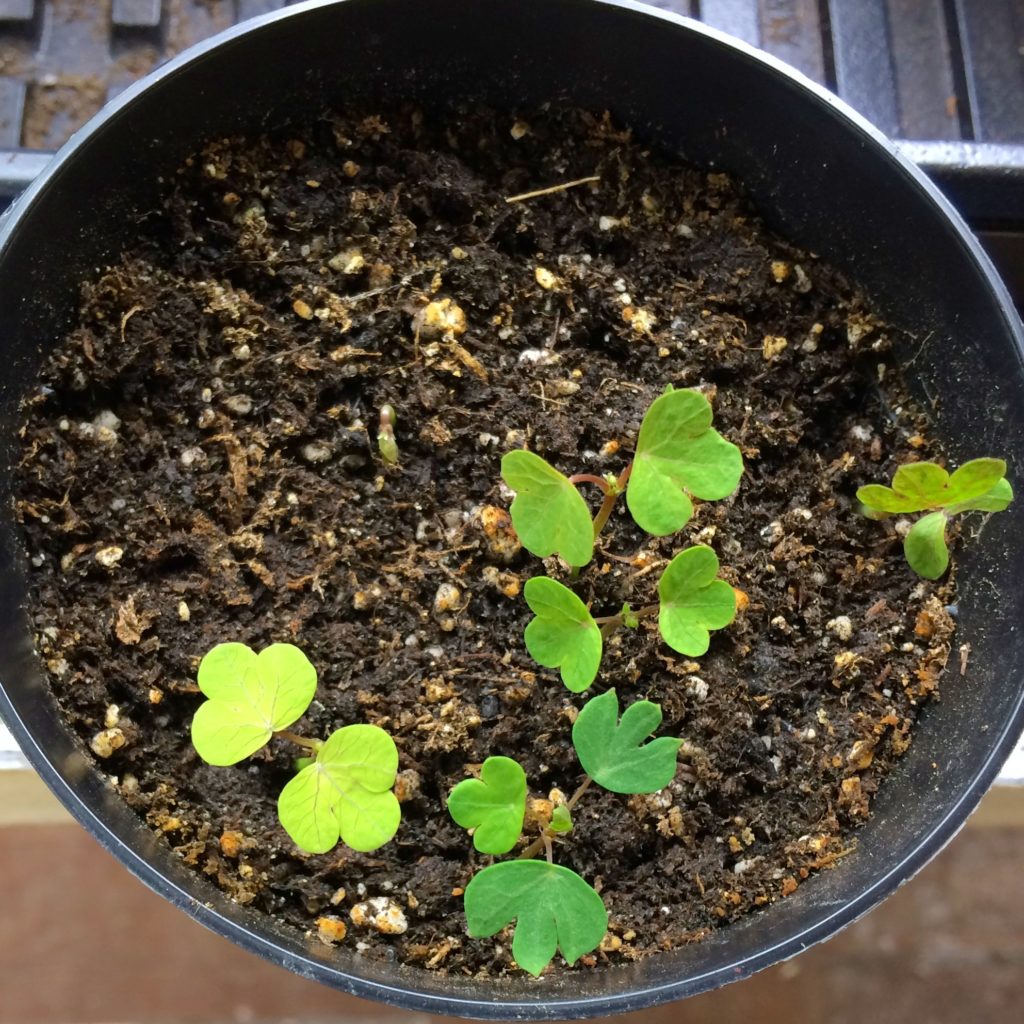Blog, breeding, mashua (Tropaeolum tuberosum)
Mashua: Seed Maturity and Germination

In theory, mashua is easier to breed than many of the other Andean roots and tubers. It has no incompatibility mechanisms, it self-pollinates easily, and most varieties flower abundantly and set lots of seed in a sufficiently long growing season. The flowers are large and easy to emasculate in order to make crosses. The only problem is that most varieties don’t begin to flower until after the autumn equinox. Generally, this means that most seed doesn’t begin to mature until mid-November. By then, we are often having light frosts and at risk of a real freeze. This means that I often lose most of the developing seed crop. Working around the problem is a challenge because mashua is a big plant and our greenhouse space is limited. I plan to build a hoop house just for mashua breeding in the future but, for now, I must make do with our outdoor plot.
So far, I have left a large amount of developing seed on the plants each year, only harvesting those that are 8 mm or larger. There is usually a great deal of smaller seed still on the plants when frost hits. I have assumed that there is no point in harvesting this immature seed and that it is better to risk a light frost in the hope that they will survive and develop further. Last year, I decided to do an experiment and harvested all seed, in any stage of development, before the first frost was predicted. I dried the seed, weighed it, grouped it into three size classes, and sowed it. The goal here is to determine how large seed must be before it is worth harvesting.
As is so often the case, I got a useful result, but not the one that I was hoping for. I was hoping, of course, that I would see good germination from all classes of seed. That would make life a lot easier. Instead, my results mostly matched my intuition about what seeds would be viable. By far the best germination was found in the large class of seed, which were mature or nearly so at the time that they were harvested. The medium class gave less than 10% germination and it is probably safe to assume that most of that occurred in the larger seeds. The small class gave no germination at all.
| Size | Diameter Range (Fresh) | Weight Range (Dry) | Weight Mean (Dry) | Germination |
| Small | 4-5 mm | 8-16 mg | 14 mg | 0% |
| Medium | 6-7 mm | 15-34 mg | 21 mg | 9.1% |
| Large | 8-10 mm | 33 – 55 mg | 47 mg | 73% |
Based upon these results, I might adjust my collection strategy to harvest slightly smaller seeds, down to 7 mm, which is not insignificant because that might give me 50% more seed. Otherwise, leaving small seeds on the plants is apparently the right choice, since there is no risk of losing viable seed.
These results will also be helpful in deciding what seed sizes are marketable. Although I might collect medium size seed for my own use, I wouldn’t want to sell those seeds due to the low germination rate. I will probably set the minimum seed weight for sale at 30 mg.

Would like to buy mashua seeds
I live in Canada
When I have them, it is in fall and very briefly. I can’t produce much and they usually sell out within weeks. Sign up for our newsletter if you want to know when they are next available. Thanks!